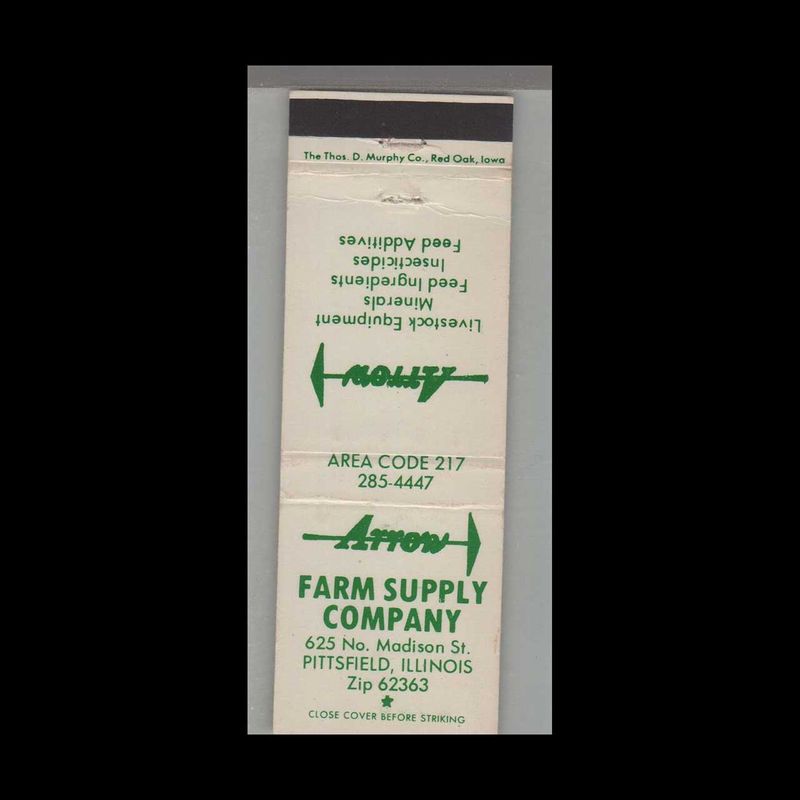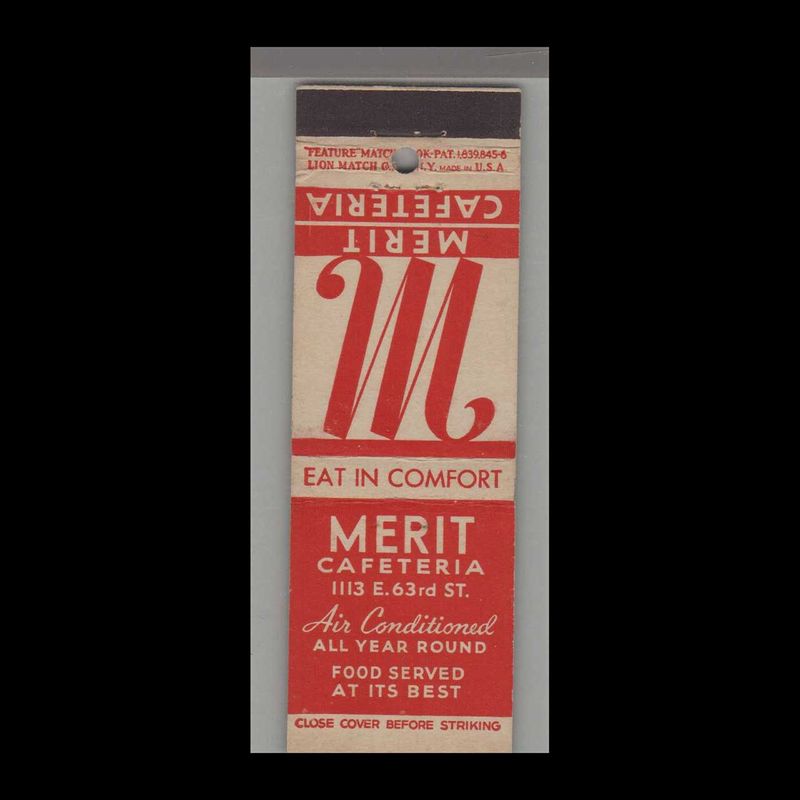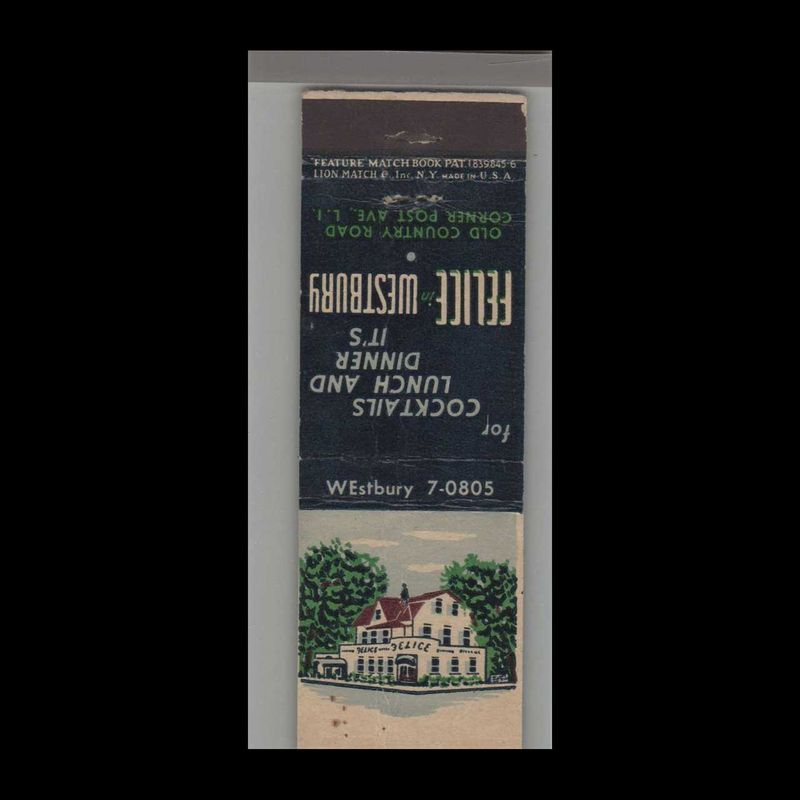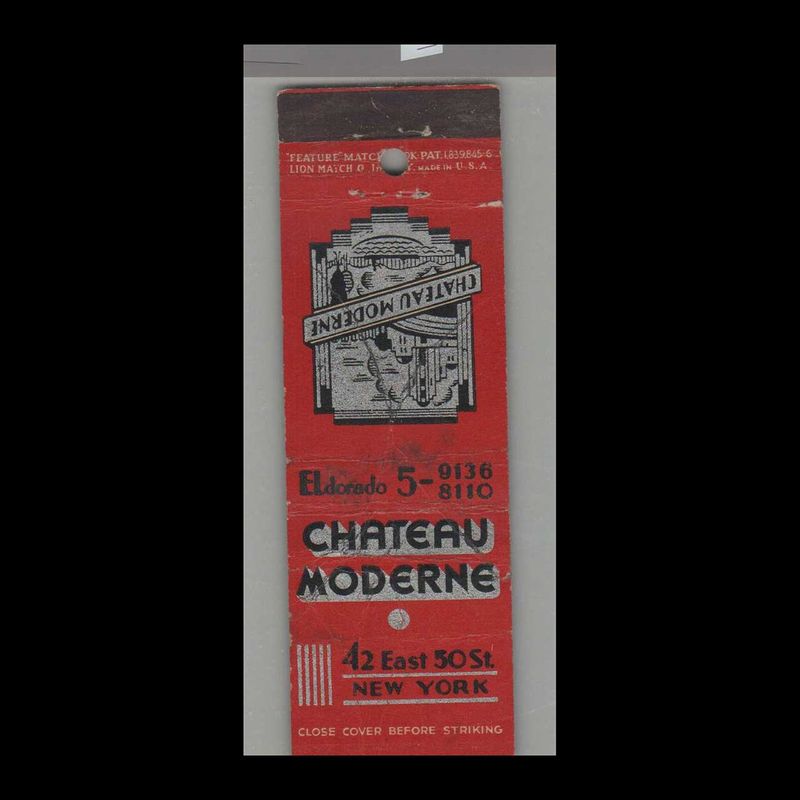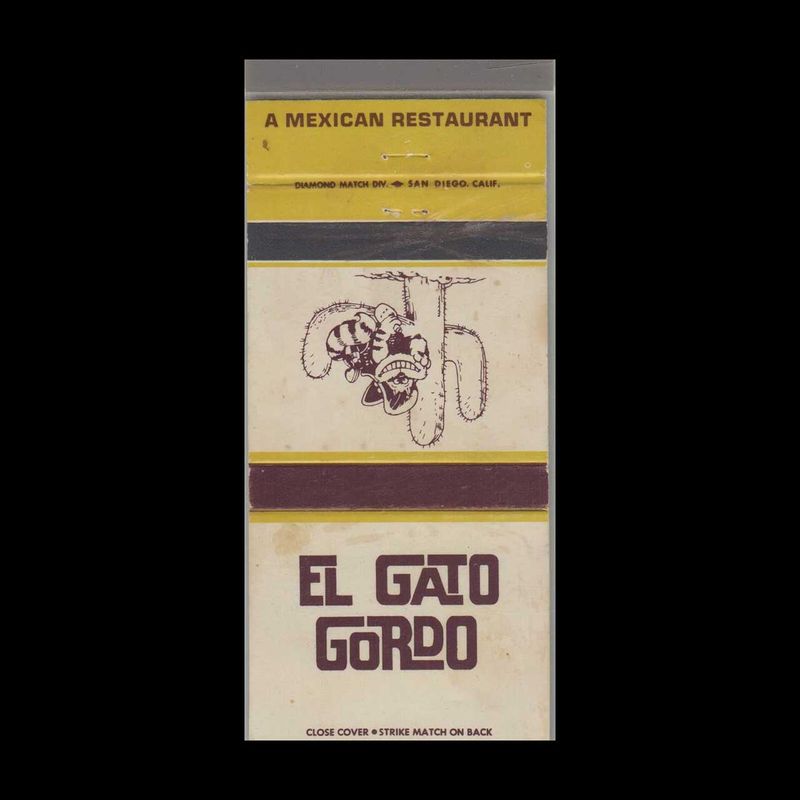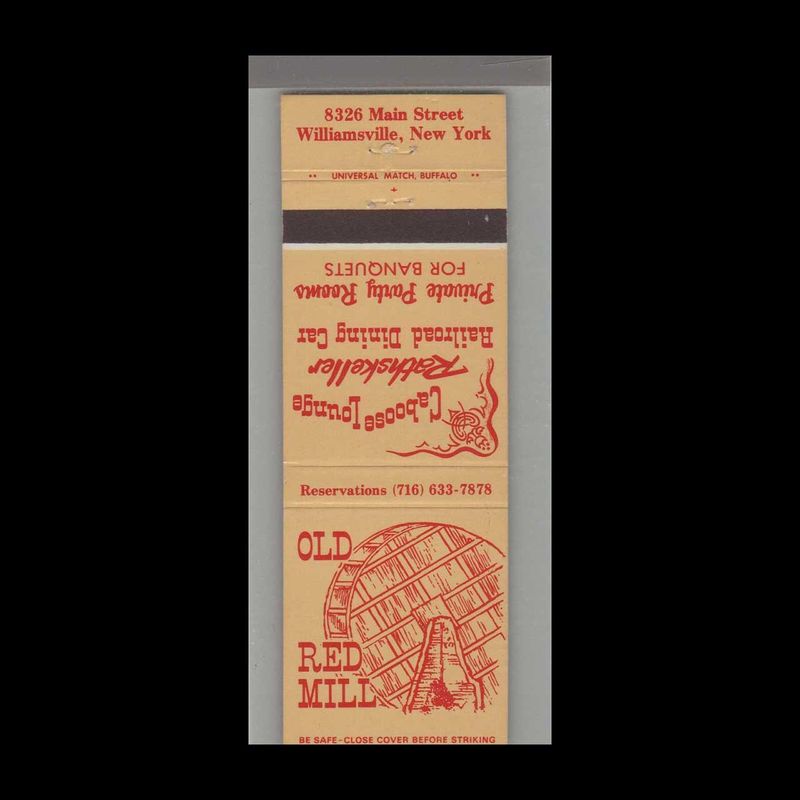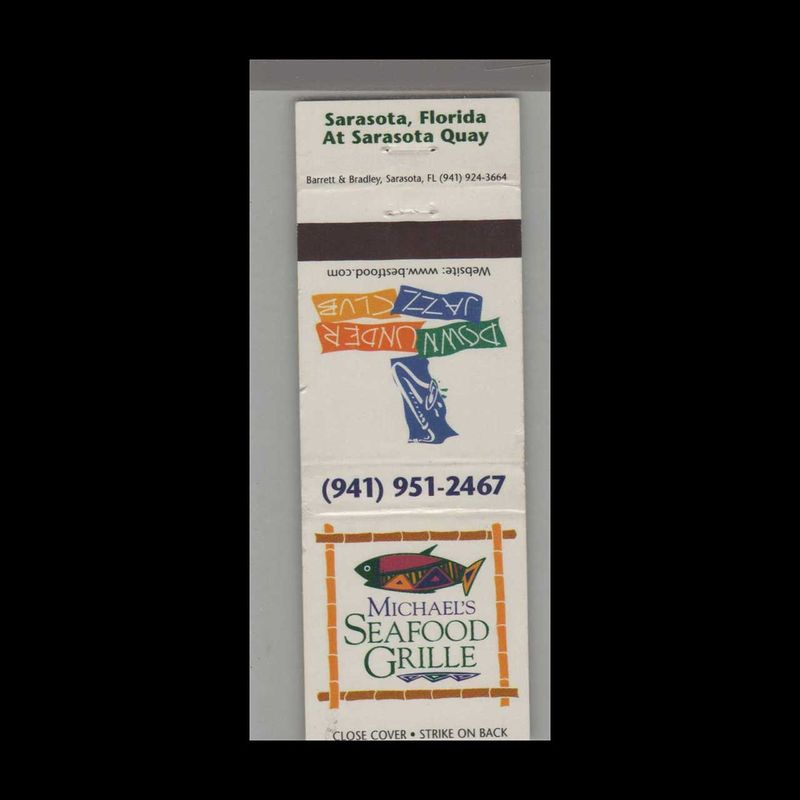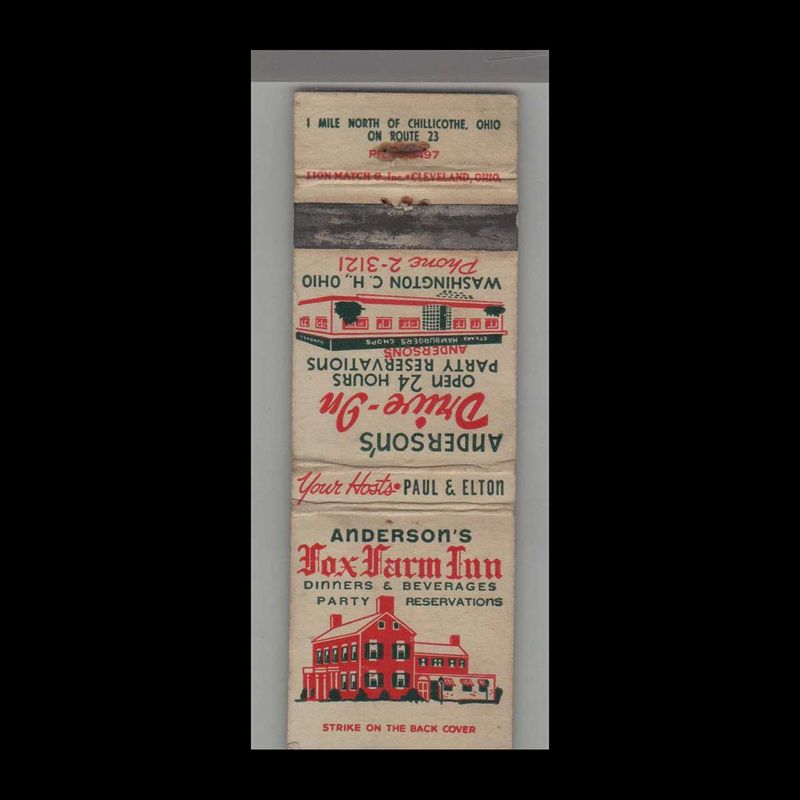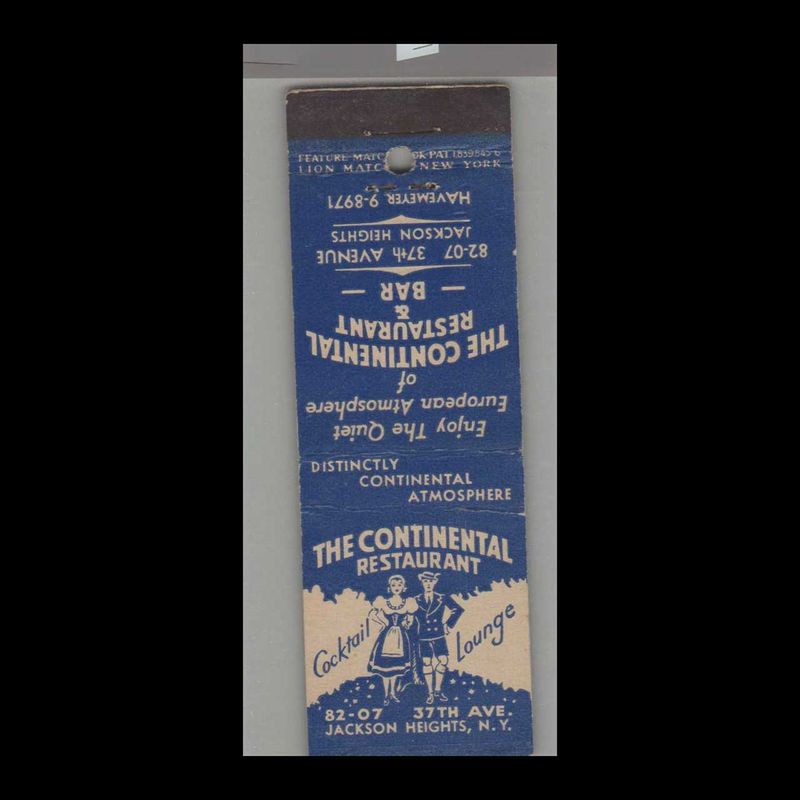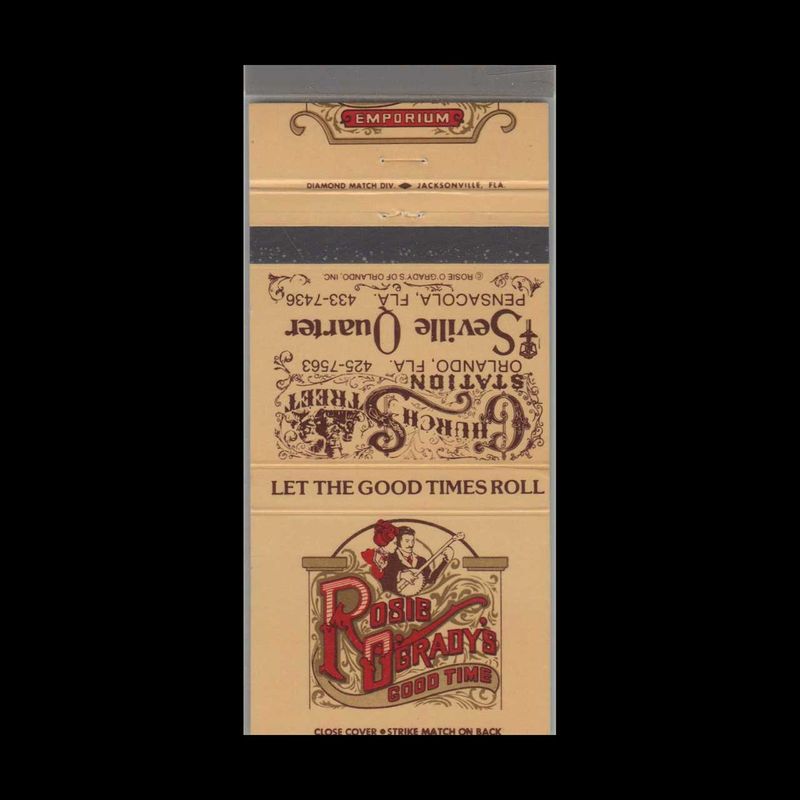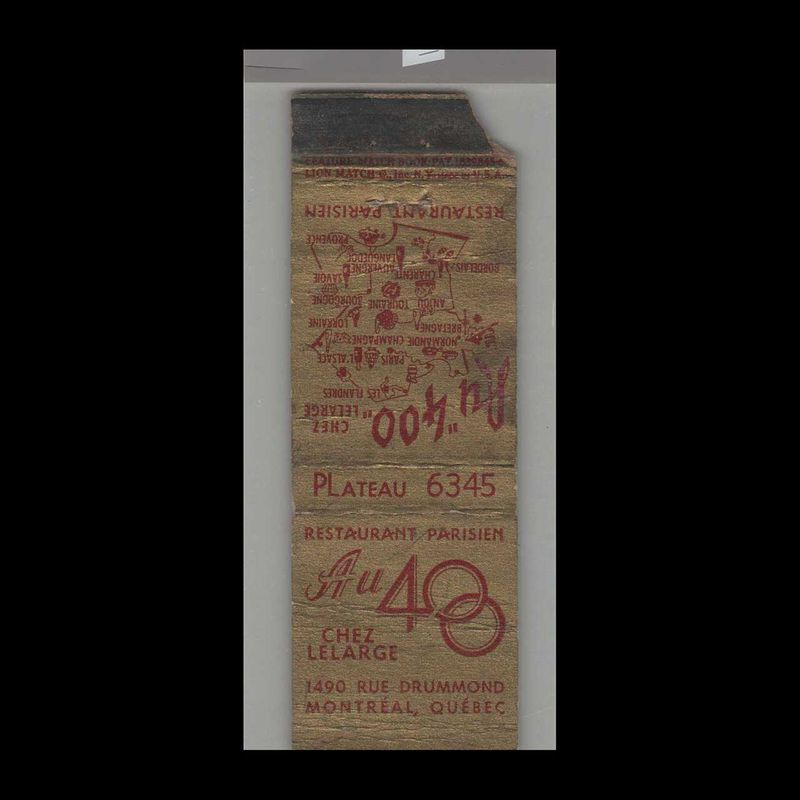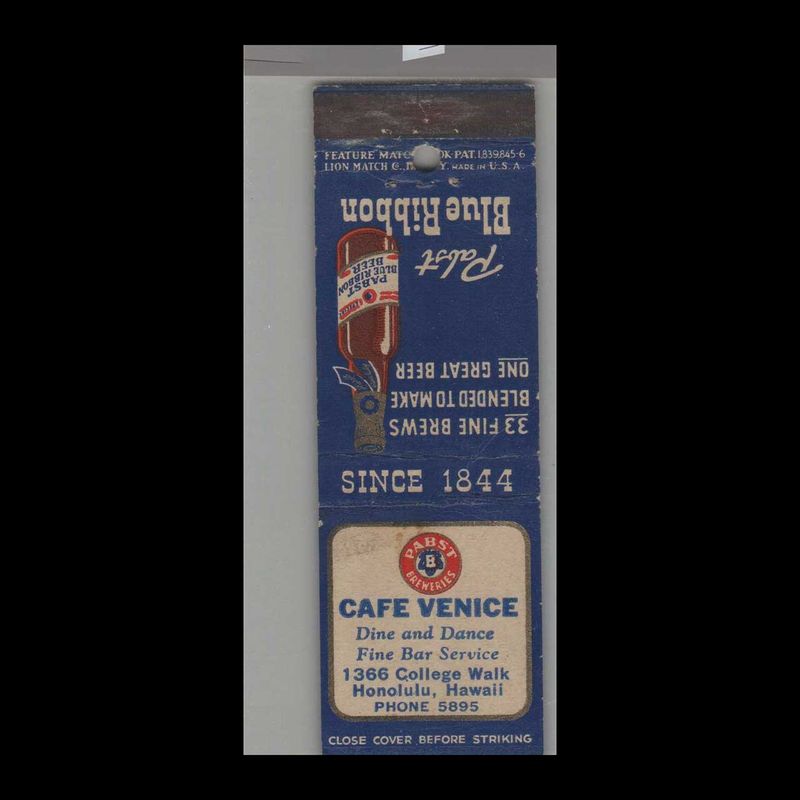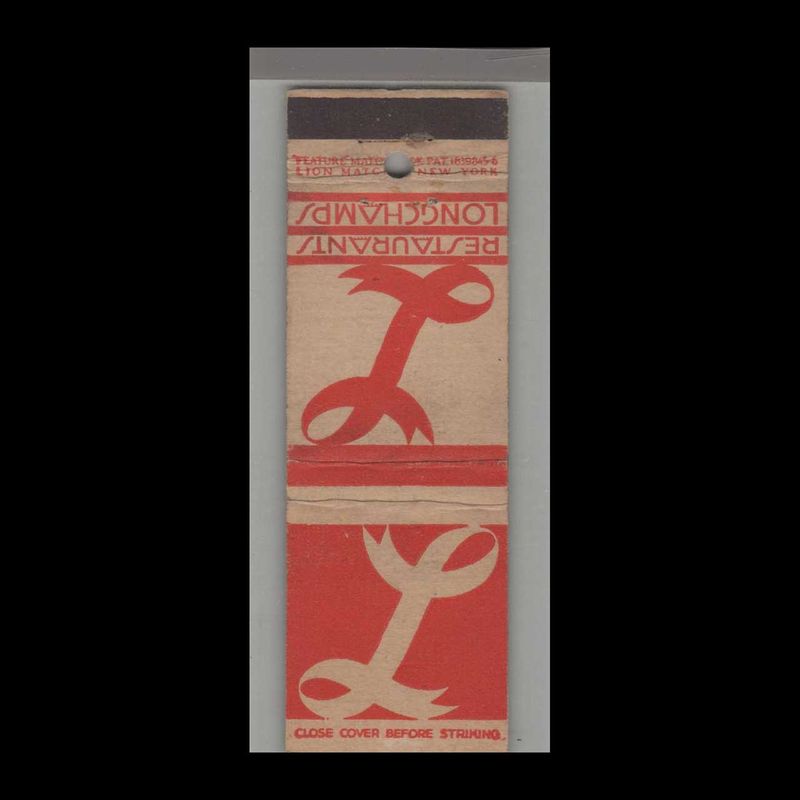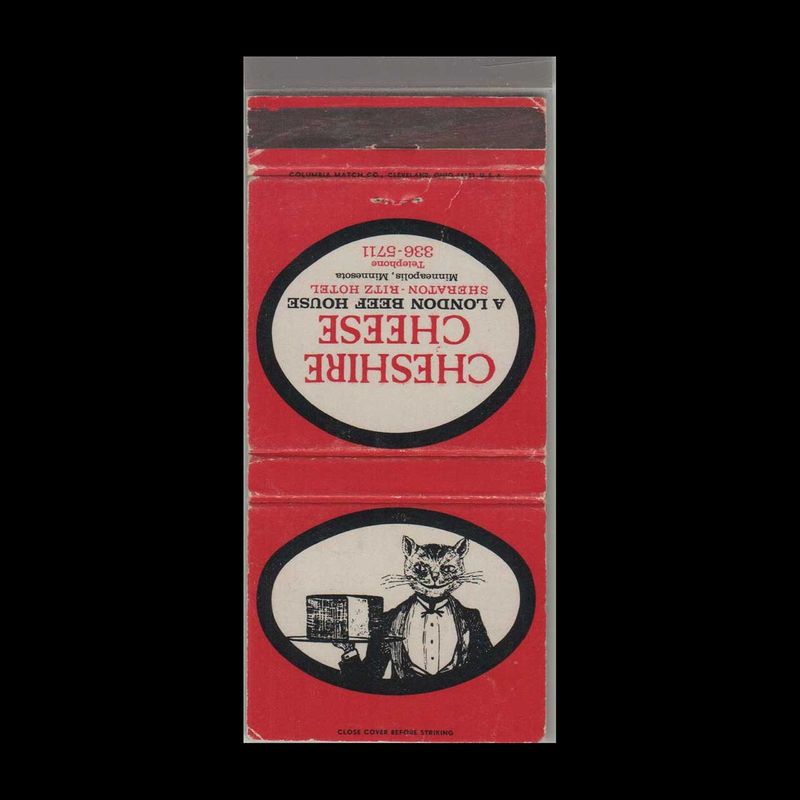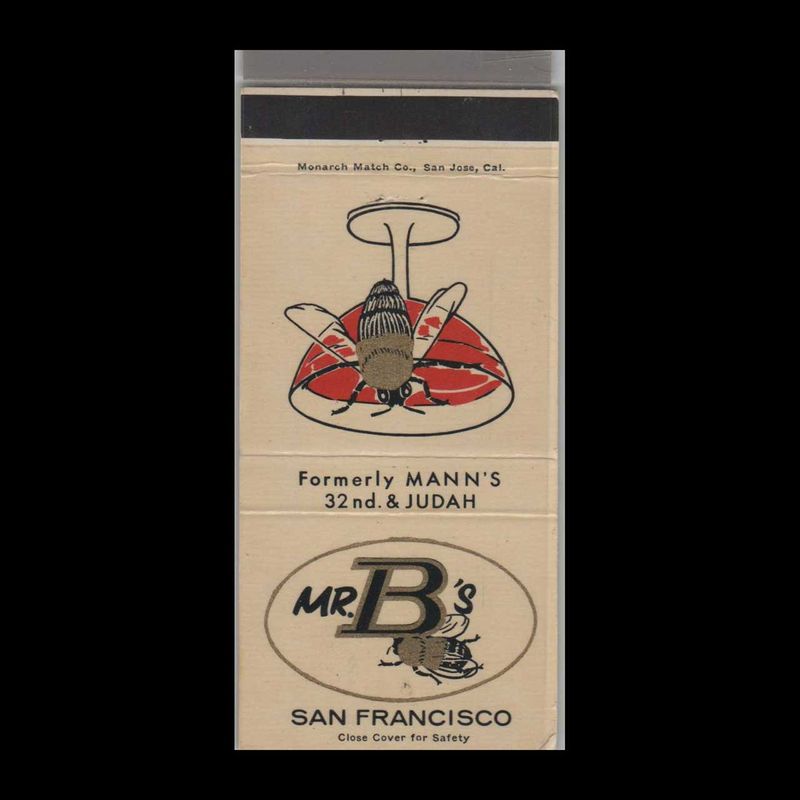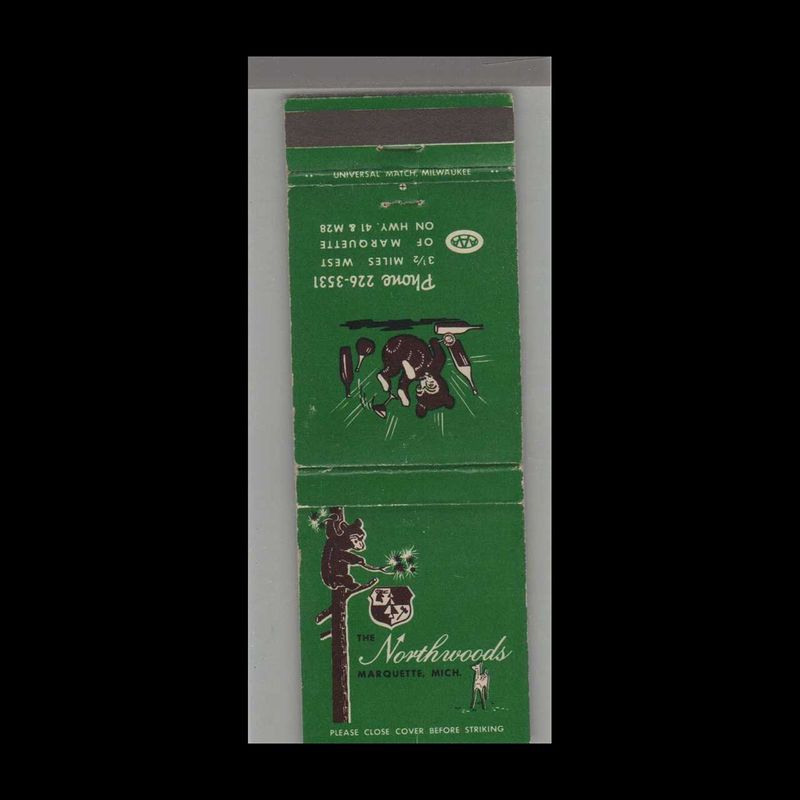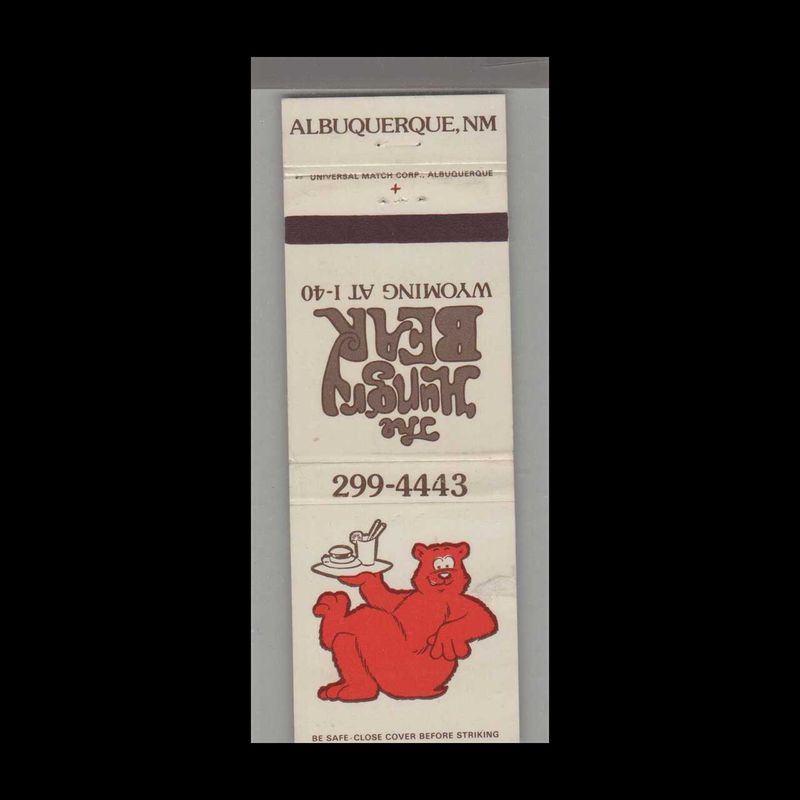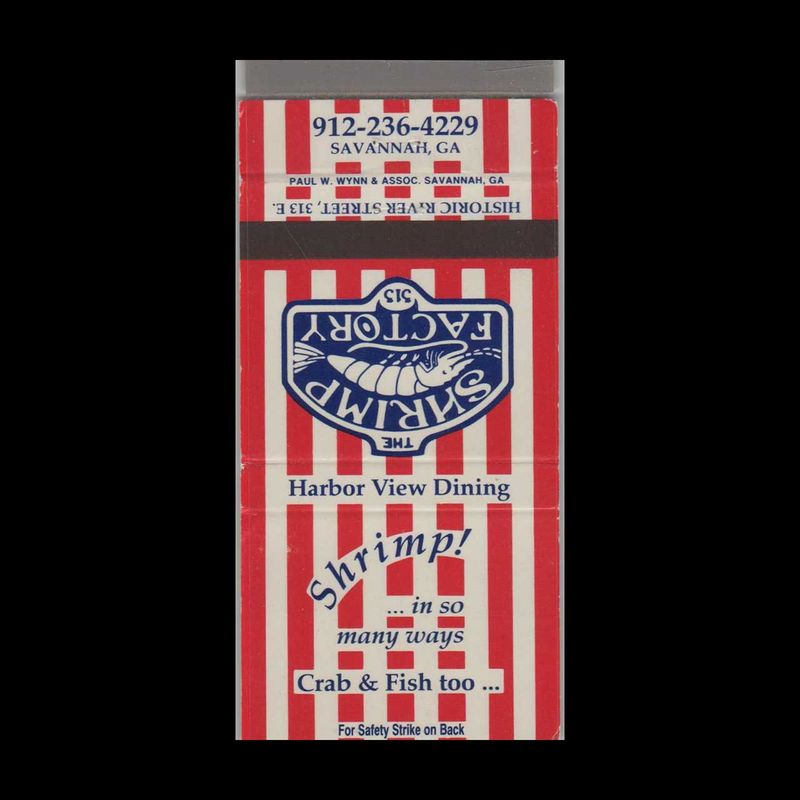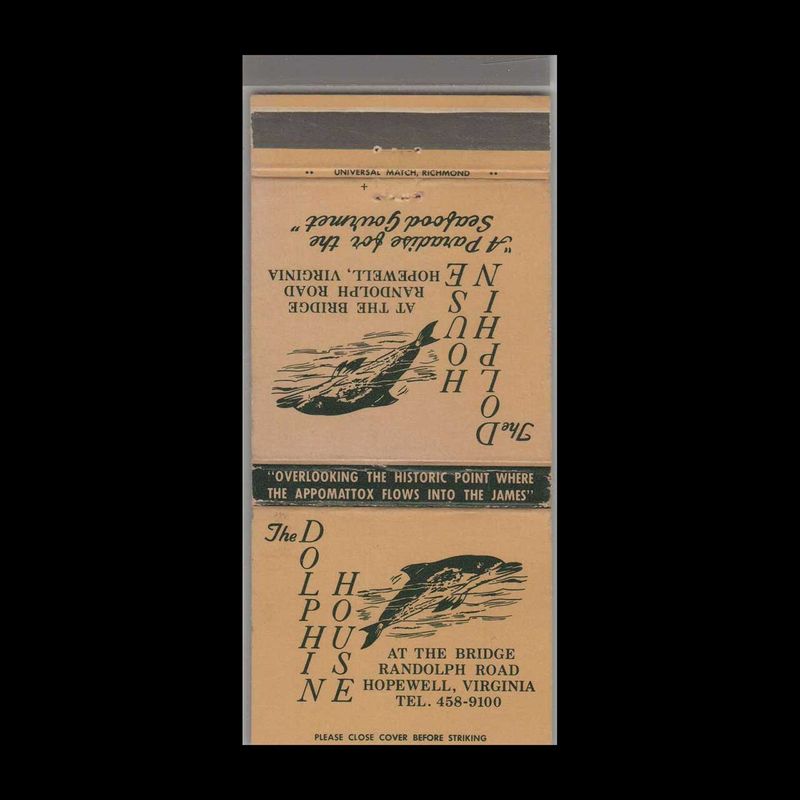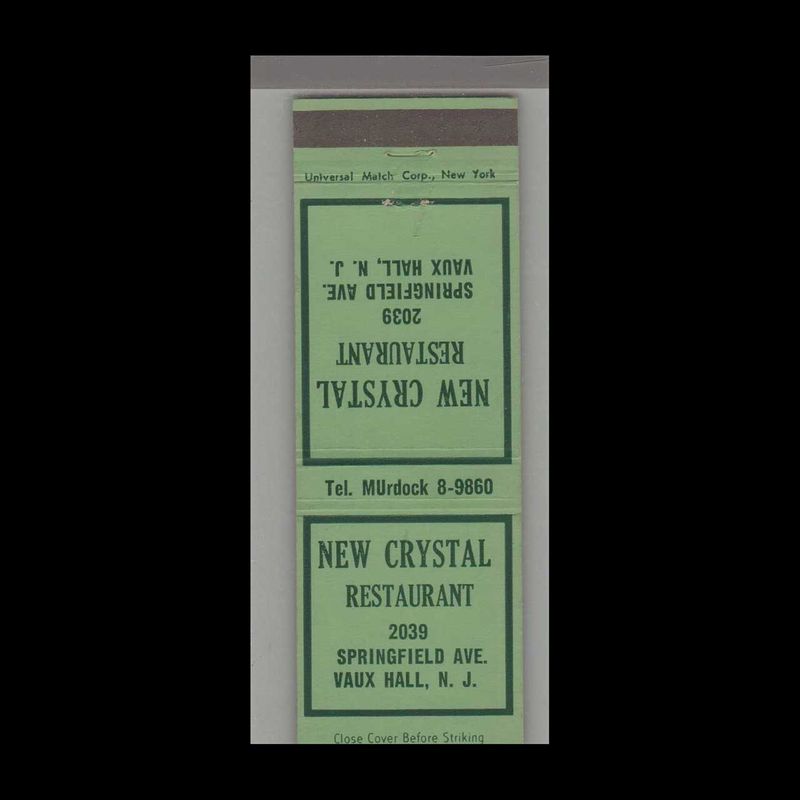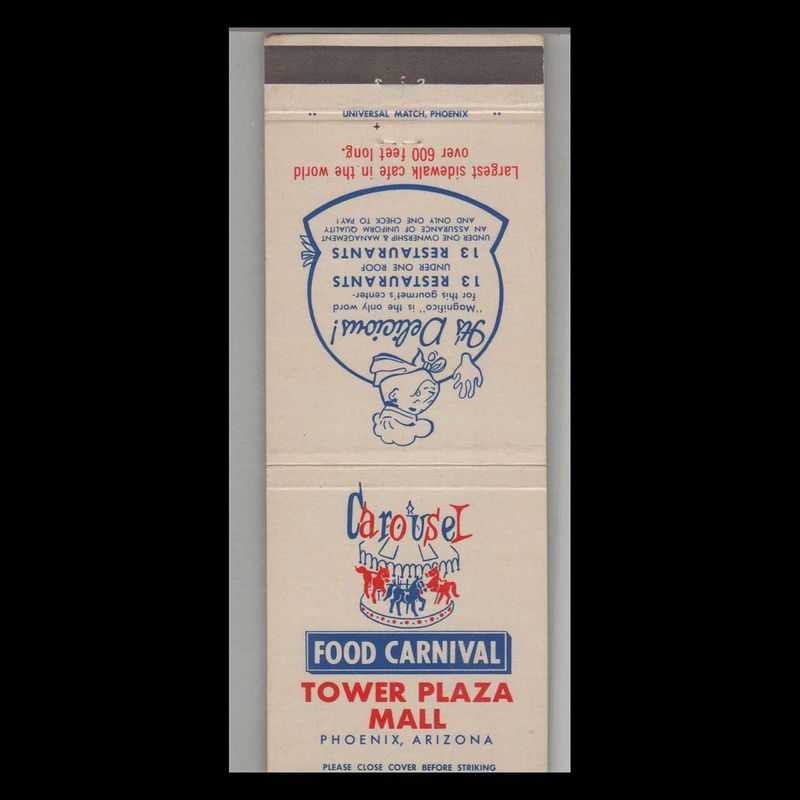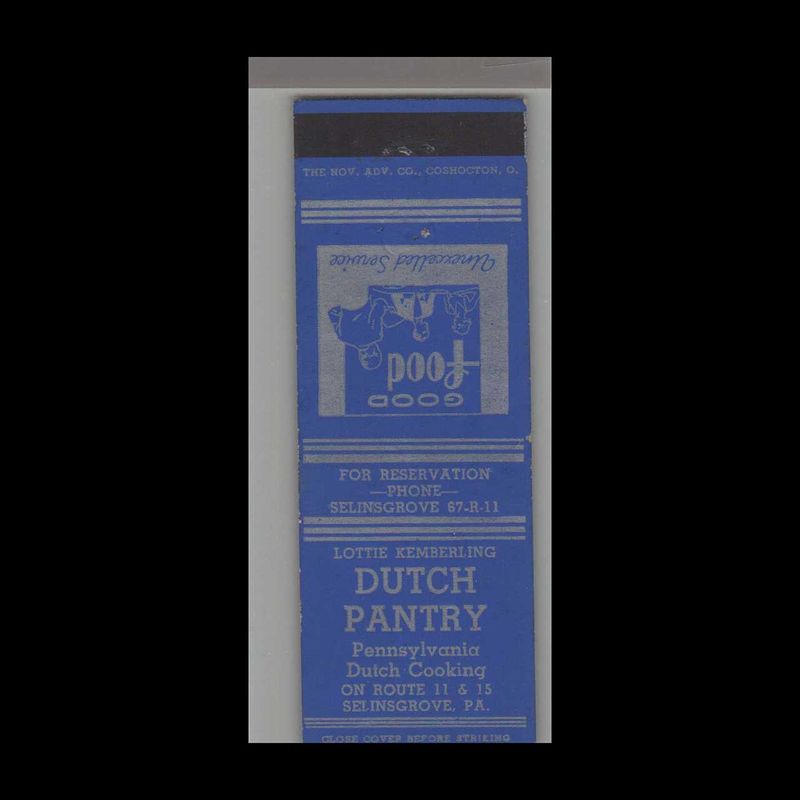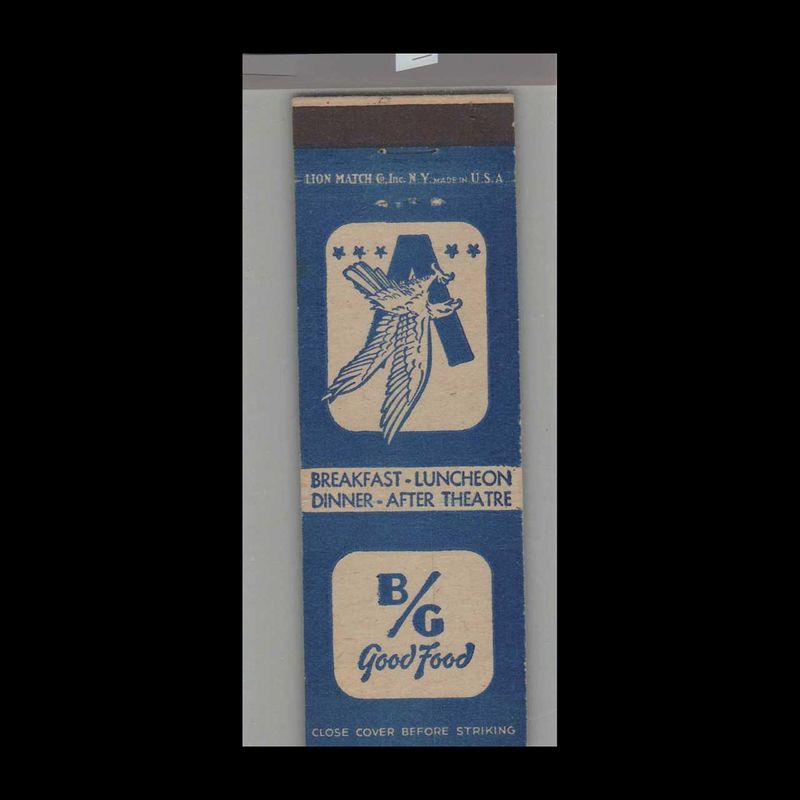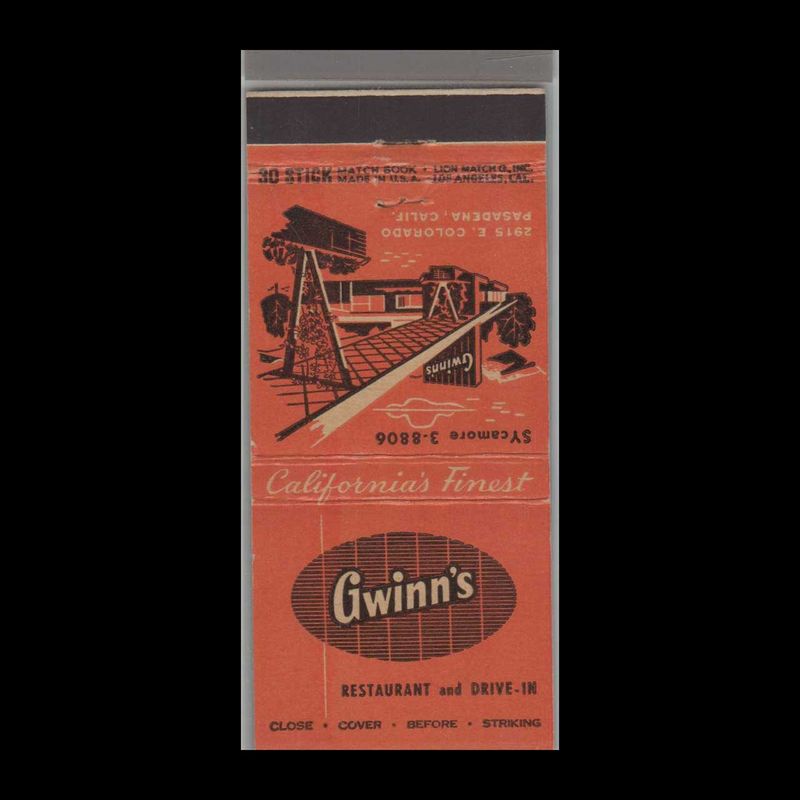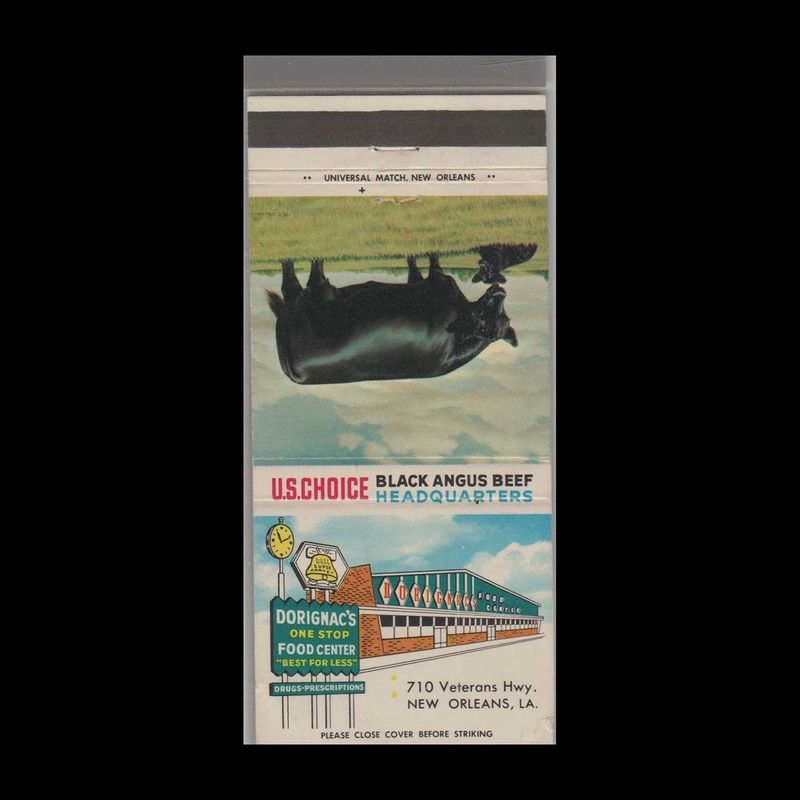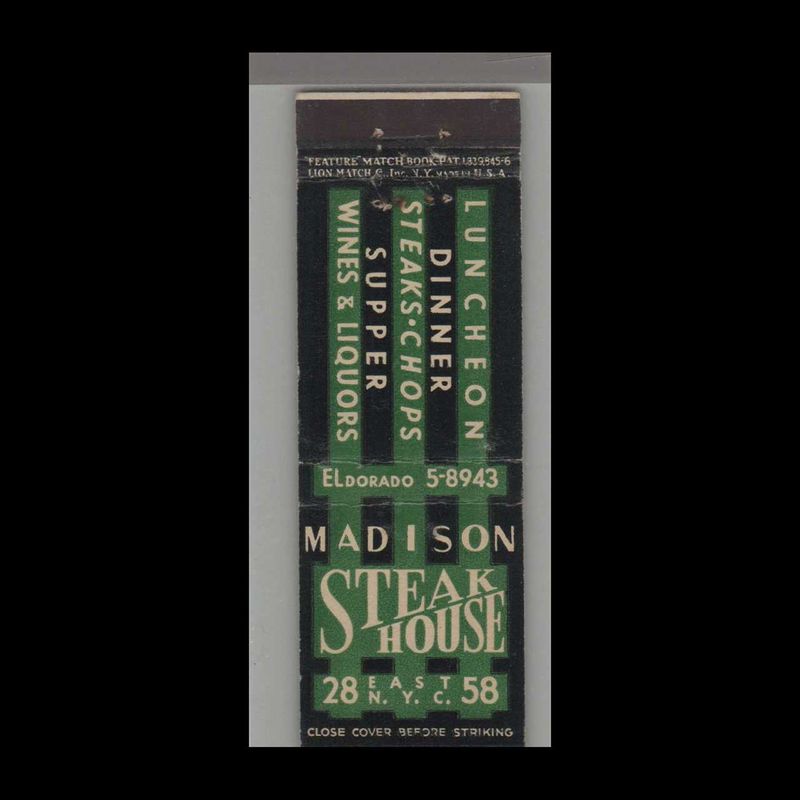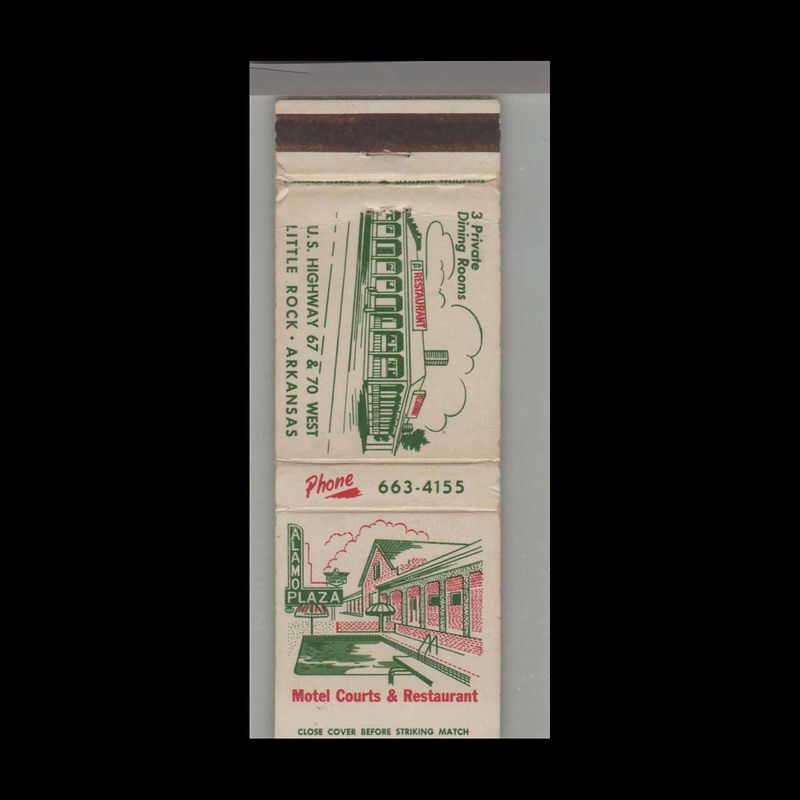Restaurants
Sparking Interest: How Restaurants Used Matchbooks as Part of Their Marketing Strategies
In the mid-20th century, matchbooks were more than just practical items for lighting cigarettes or stoves—they were potent marketing tools that restaurants across America used to promote their establishments. From local diners to regional chains and national franchises, restaurants ingeniously utilized matchbooks to attract customers, build brand recognition, and foster customer loyalty. This article explores how matchbooks became a key element of restaurant marketing strategies.
Local Restaurants: Building Community Connection
For local restaurants, matchbooks were an effective way to establish a presence within the community and build a loyal customer base. These matchbooks often featured the restaurant's name, logo, address, and contact information, along with enticing images of their signature dishes. Slogans like "Home-Cooked Meals" or "Your Neighborhood Spot" emphasized the local and welcoming atmosphere of the restaurant.
Distributed at the restaurant itself, local businesses, community events, and through partnerships with local merchants, these matchbooks ensured that the restaurant's brand remained visible in the daily lives of potential customers. The frequent handling and practical use of matchbooks kept the restaurant top-of-mind, encouraging repeat visits and word-of-mouth referrals.
Regional Chains: Enhancing Brand Identity
Regional chains used matchbooks to strengthen their brand identity and unify their various locations under a common image. These matchbooks often displayed the chain's logo, signature colors, and images of popular menu items. Slogans like "Taste the Tradition" or "Your Favorite Stop" reinforced the consistency and quality that customers could expect across different locations.
Matchbooks for regional chains were distributed not only at individual restaurants but also at regional events, hotels, and travel centers, reaching a broader audience. By creating a cohesive and recognizable brand image, regional chains used matchbooks to build a strong, loyal customer base and encourage diners to seek out their locations when traveling within the region.
National Franchises: Broadening Reach and Recognition
National restaurant franchises leveraged matchbooks to enhance their brand visibility on a large scale. These matchbooks featured the franchise's logo, iconic imagery, and memorable slogans like "Have It Your Way" or "America's Favorite Diner." They often included special offers, coupons, or information about new menu items to entice customers.
Distributed widely at restaurants, service stations, hotels, and through mail campaigns, these matchbooks reached a diverse and extensive audience. The consistent branding across all matchbooks helped reinforce the franchise's identity and ensured that customers could easily recognize and trust the brand, no matter where they were in the country.
Promoting Special Events and Offers
Restaurants of all sizes used matchbooks to promote special events, seasonal offers, and limited-time promotions. Matchbooks might advertise an upcoming live music night, a holiday-themed menu, or a special discount for a limited period. By providing this information in a portable and frequently used item, restaurants ensured that customers were aware of and reminded about these events and offers.
This strategy helped drive traffic during specific periods and created a sense of urgency, encouraging customers to visit the restaurant to take advantage of special deals and unique experiences.
Creating Collectibles and Memorabilia
For many customers, restaurant matchbooks became cherished collectibles and memorabilia. Special edition matchbooks commemorating anniversaries, new locations, or major milestones were highly sought after. Collectors and loyal customers valued these items for their nostalgic appeal and the memories they represented.
By creating collectible matchbooks, restaurants not only promoted their brand but also fostered a deeper emotional connection with their customers. These matchbooks served as tangible reminders of positive dining experiences and helped build long-term loyalty.
The Decline and Legacy of Restaurant Matchbooks
With the advent of digital marketing and changes in smoking habits, the use of matchbooks in restaurant marketing has declined. However, their legacy endures as a fascinating chapter in the history of advertising. Vintage restaurant matchbooks are now prized collectibles, offering a window into the marketing strategies and cultural trends of the past.
Conclusion
Matchbooks were a versatile and effective marketing tool that restaurants across America used to attract customers, build brand recognition, and foster loyalty. From local diners to national franchises, restaurants leveraged the practical utility and broad reach of matchbooks to enhance their visibility and connect with customers. While modern marketing strategies have evolved, the legacy of matchbooks remains a testament to the creative and innovative ways in which restaurants promoted their businesses. These small yet impactful items continue to hold nostalgic value, reminding us of the rich history of dining and advertising
